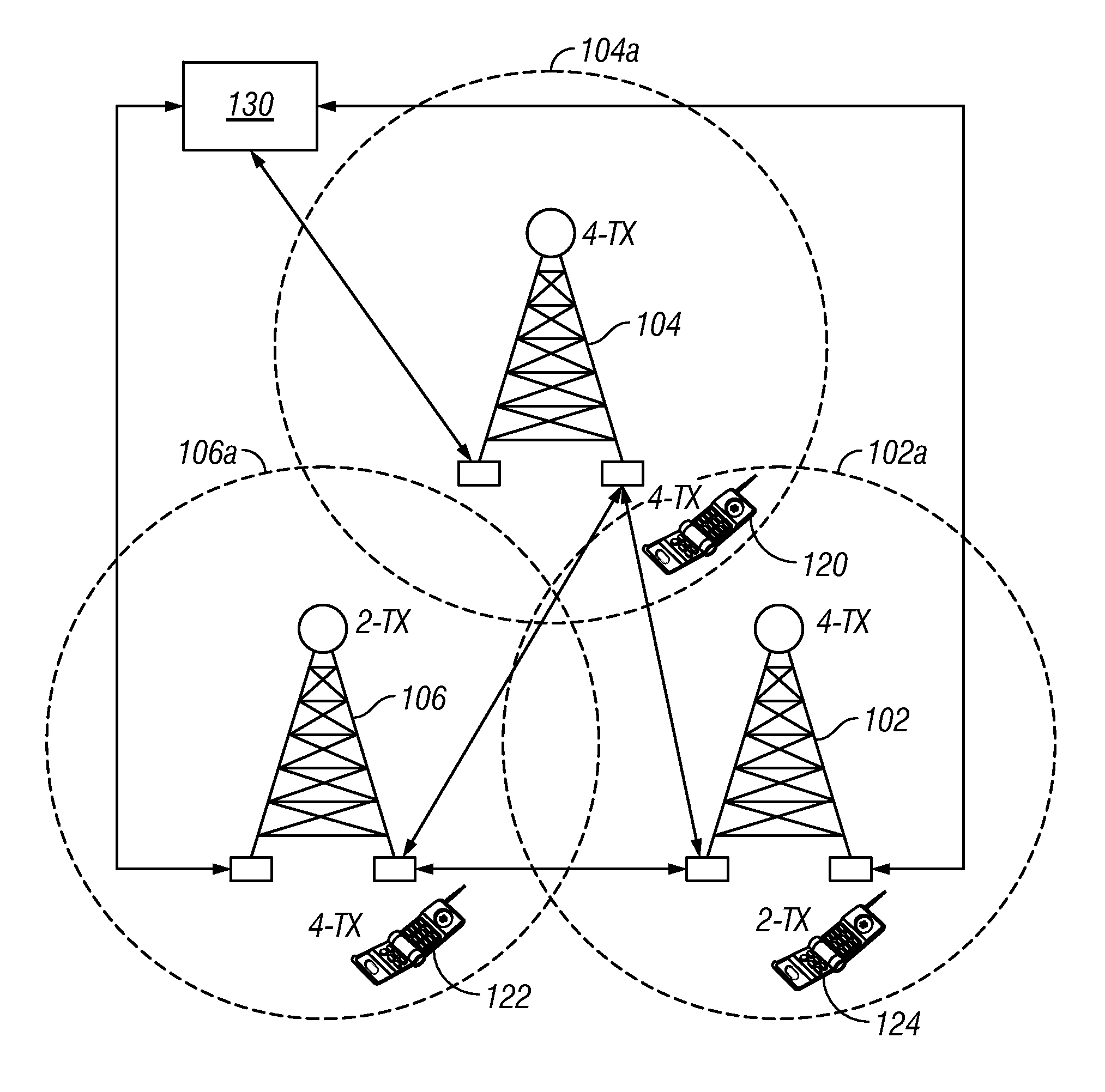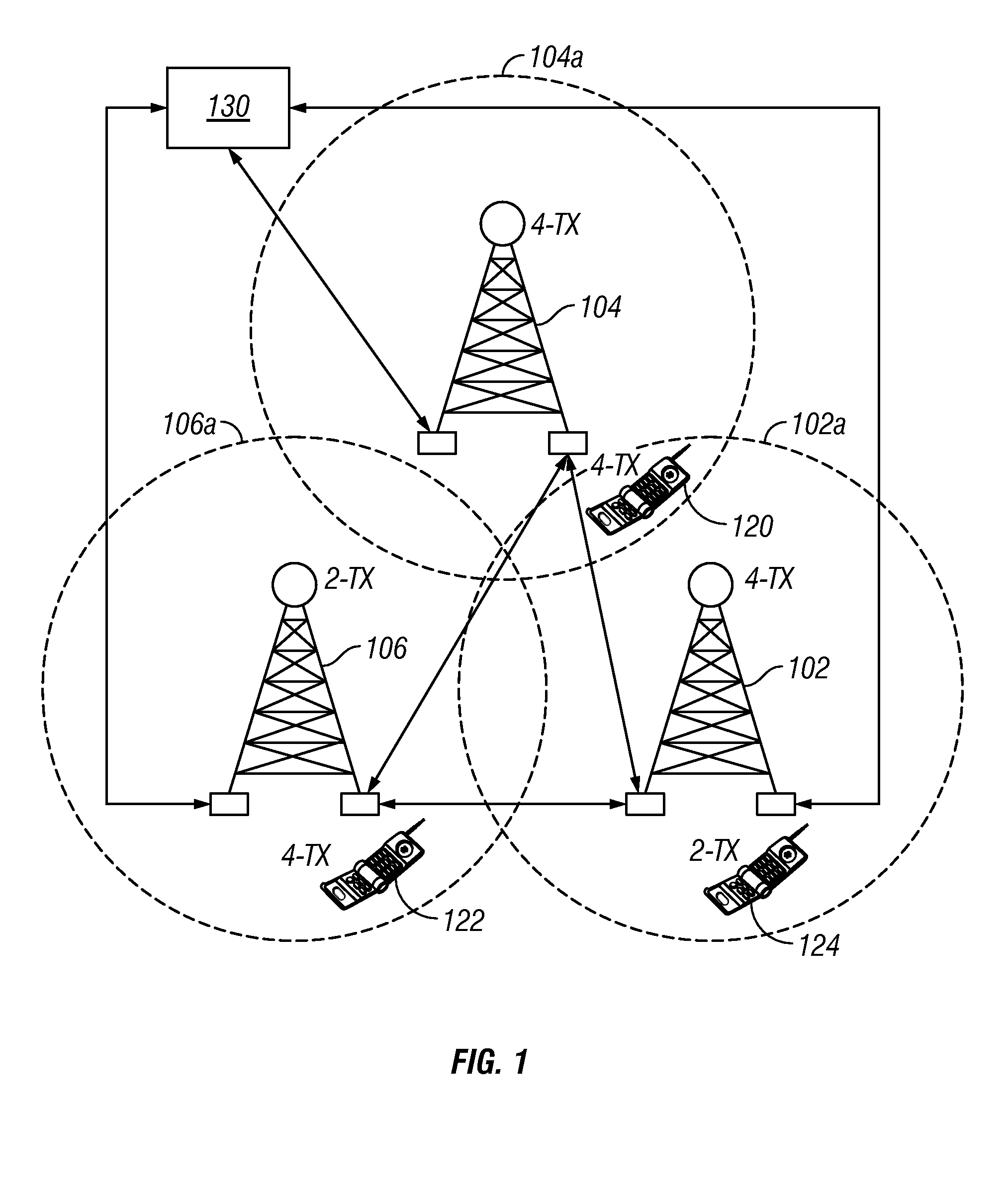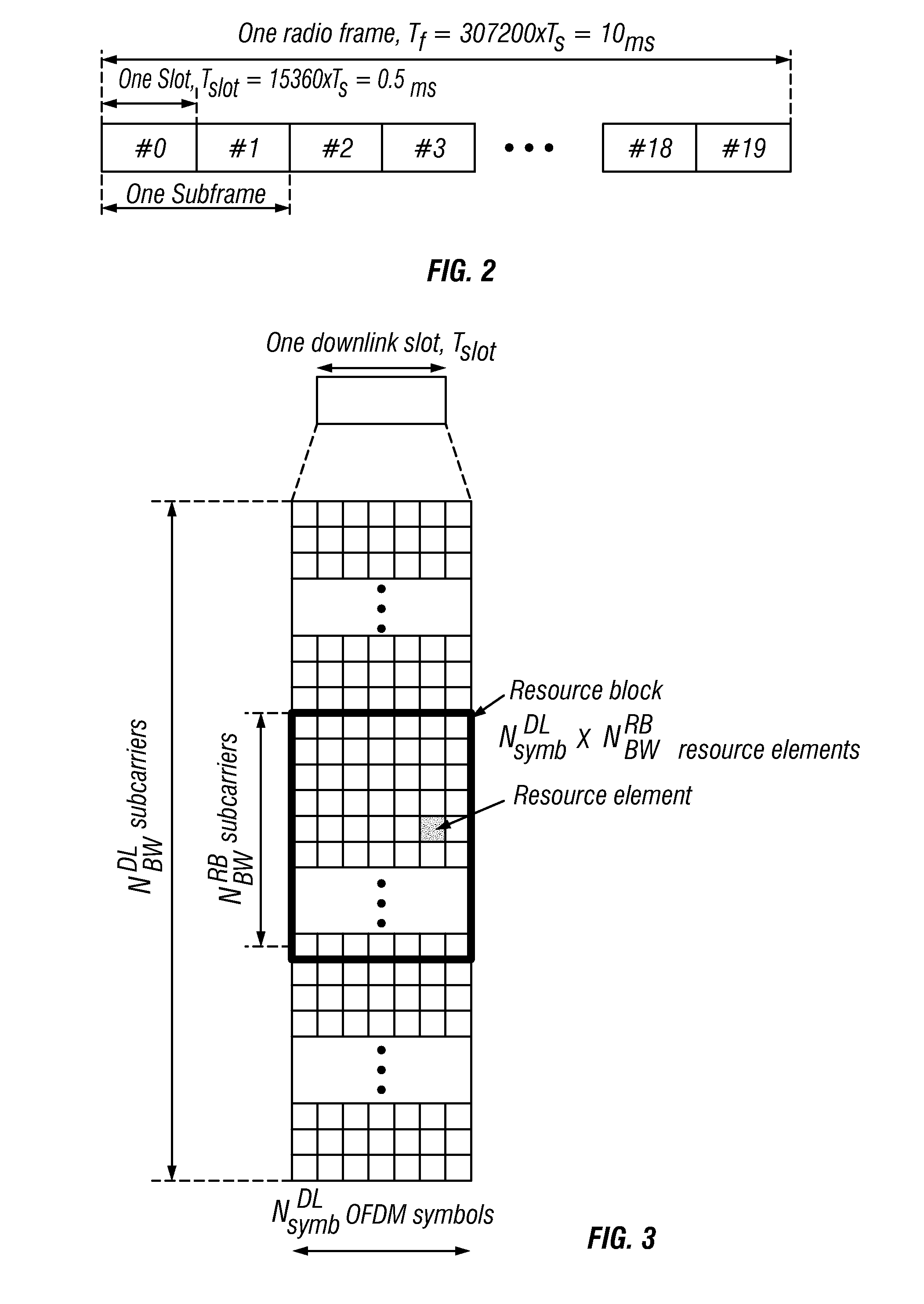Method and system for optimized reference signal downlink transmission in a wireless communication system
a wireless communication system and reference signal technology, applied in the field of downlink transmission of reference signals in the network, can solve problems such as performance degradation, and achieve the effect of reducing mai and reducing mai
- Summary
- Abstract
- Description
- Claims
- Application Information
AI Technical Summary
Benefits of technology
Problems solved by technology
Method used
Image
Examples
Embodiment Construction
[0025]FIG. 1 is a diagram of a wireless communication system like that proposed by 3GPP LTE. The system includes a plurality of Node-Bs (base stations) 102, 104, 106; a plurality of UEs (mobile phones or terminals), such as mobile phones or terminals 120, 122, 124; and a central gateway 130 that provides connection of the system to the public telephone network. The Node-Bs 102, 104, 106 are connected to the gateway 130 and may be connected to each other.
[0026]Each Node-B may serve one or more cells. In the example of FIG. 1, Node-B 102 serves cells 102a; Node-B 104 serves cells 104a; and Node-B 106 serves cells 106a. 3GPP LTE proposes a multiple-input multiple-output (MIMO) system, so some of the Node-Bs may have multiple receive antennas and some may have multiple transmit antennas. There are no restrictions on the combinations of Node-B transmit and receive antennas. In a typical 3GPP LTE proposed network, a Node-B may have either two physical transmit antennas (2-TX) or four phys...
PUM
 Login to View More
Login to View More Abstract
Description
Claims
Application Information
 Login to View More
Login to View More - R&D
- Intellectual Property
- Life Sciences
- Materials
- Tech Scout
- Unparalleled Data Quality
- Higher Quality Content
- 60% Fewer Hallucinations
Browse by: Latest US Patents, China's latest patents, Technical Efficacy Thesaurus, Application Domain, Technology Topic, Popular Technical Reports.
© 2025 PatSnap. All rights reserved.Legal|Privacy policy|Modern Slavery Act Transparency Statement|Sitemap|About US| Contact US: help@patsnap.com



